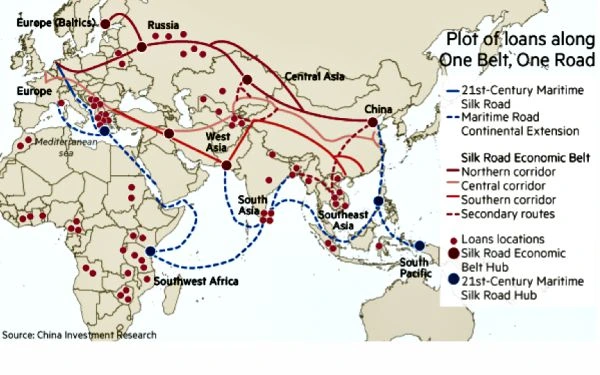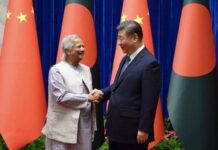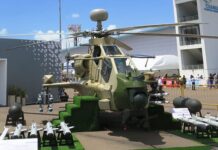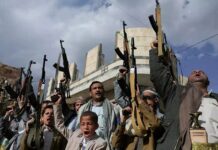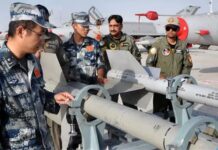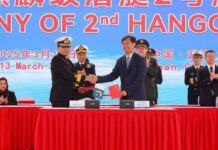Understanding China’s Strategy
China’s National Strategy
China’s national strategy aims to achieve “the great rejuvenation of the Chinese nation” by 2049. The strategy is a determined pursuit of political, social, and military modernity to expand the PRC’s national power, perfect its governance, and revise the international order in support of Beijing’s system of governance and national interests. The PRC increasingly views the United States as deploying a whole-of-government effort meant to contain the PRC’s rise, which presents obstacles to its national strategy.
The PRC has characterized its view of strategic competition in terms of a rivalry among powerful nation states, as well as a clash of opposing ideological systems. PRC leaders believe that structural changes in the international system and an increasingly confrontational United States are the root causes of intensifying strategic competition between the PRC and the United States.
The PRC’s strategy entails deliberate and determined efforts to amass, improve, and harness the internal and external elements of national power that will place the PRC in a “leading position” in an enduring competition between systems.
The PRC’s 20th National Congress of the CCP holds important military and security implications for the PLA’s 2027 centenary objectives. The 20th Party Congress report focused on intensifying and accelerating the PLA’s modernization goals over the next five years, including strengthening its “system of strategic deterrence.” Xi Jinping retained his chairmanship of the seven-person Central Military Commission (CMC) and selected members that offer political continuity, technical expertise on military modernization and space issues, and Taiwan-focused operational experience.
Foreign Policy
The PRC’s foreign policy seeks to build a “community of common destiny” that supports its strategy to realize “the great rejuvenation of the Chinese nation.” Beijing’s revisionist ambition for the international order derives from the objectives of its national strategy and the CCP’s political and governing systems.
In 2021, the PRC employed multiple diplomatic tools in an attempt to erode U.S. and partner influence, such as highlighting the U.S. withdrawal from Afghanistan and criticizing U.S.-backed security partnerships including the Quad (Australia, India, Japan, and the US) and Australia-UK-US partnership (AUKUS).
The COVID-19 pandemic also continued to be a driving force behind the PRC’s foreign policy efforts in 2021, as Beijing sought to deflect blame for its initial response to the pandemic and continued its use of foreign medical assistance, including vaccine donations, to bolster its bilateral ties and advance its responsible great power narrative.
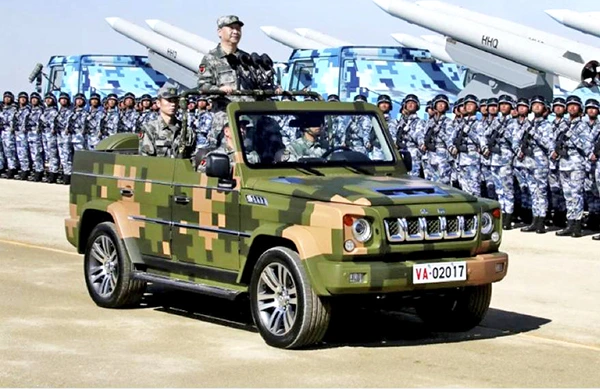
Economic Policy
The PRC’s military modernization objectives are commensurate with and part of China’s broader national development aspirations. The CCP’s economic, political, social, and security development efforts are mutually reinforcing and support Beijing’s strategy of national rejuvenation.
Beijing’s “dual circulation” policy aims to forge domestic resilience by reducing China’s reliance on foreign supply chains that have proven to be economic chokepoints. In addition, the policy aims to boost domestic production and consumption to fuel growth and decrease the economy’s reliance on exports moving forward.
China’s economic development supports its military modernization by providing the means for larger defense budgets. Additionally, the PRC’s growing national industrial and technological base, as well as deliberate Party-led initiatives such as the Belt and Road Initiative (BRI) and Made in China 2025, offers systemic military benefits to the PRC.
China’s Belt and Road Initiative
The PRC uses BRI to support its strategy of national rejuvenation by seeking to expand global transportation and trade linkages to support its development and deepen its economic integration with nations along its periphery and beyond.
In 2021, the PRC significantly increased engagement with African, Latin American, and Middle Eastern countries and began prioritizing public health, digital infrastructure, and green energy opportunities.
Overseas development and security interests under BRI will drive the PRC towards expanding its overseas security footprint to protect those interests.
Military-Civil Fusion Development Strategy
The PRC pursues its Military-Civil Fusion (MCF) development strategy to “fuse” its security and development strategies to build an integrated National Strategic System and Capabilities in support of the PRC’s national rejuvenation goals.
Beijing’s MCF development strategy includes objectives to develop and acquire advanced dual-use technology for military purposes and to deepen reform of the national defense science and technology industries, and serves a broader purpose to strengthen all of the PRC’s instruments of national power.
The PRC’s MCF development strategy encompasses six interrelated efforts:
(1) fusing China’s defense industrial base and its civilian technology and industrial base;
(2) integrating and leveraging science and technology innovations across military and civilian sectors;
(3) cultivating talent and blending military and civilian expertise and knowledge;
(4) building military requirements into civilian infrastructure and leveraging civilian construction for military purposes;
(5) leveraging civilian service and logistics capabilities for military purposes; and
(6) expanding and deepening China’s national defense mobilization system to include all aspects of its society and economy.
Defense Policy and Military Strategy
In 2021, the PRC’s stated defense policy aims remained oriented toward safeguarding its sovereignty, security, and development interests, while emphasizing a greater global role for itself. The PRC’s military strategy remains based on the concept of “active defense.”
PRC leaders stress the imperative of strengthening the PLA into a “world-class” military by the end of 2049 as an essential element of its strategy to rejuvenate the PRC into a “great modern socialist country.”
In 2020, the PLA added a new milestone for modernization in 2027, to accelerate the integrated development of mechanization, informatization, and intelligentization of the armed forces, which if realized could give the PLA capabilities to be a more credible military tool for the CCP to wield as it pursues Taiwan unification.
In 2021, the PLA began discussing a new “core operational concept,” called “Multi- Domain Precision Warfare (MDPW).” MDPW is intended to leverage a C4ISR network, which the PLA calls the “network information system-of-systems that incorporates advances in big data and artificial intelligence to rapidly identify key vulnerabilities in the U.S. operational system and then combine joint forces across domains to launch precision strikes against those vulnerabilities.
Based on the Annual Report to U.S. Congress by the Secretary of Defense: Military and Security Developments Involving the People’s Republic of China, 2022


